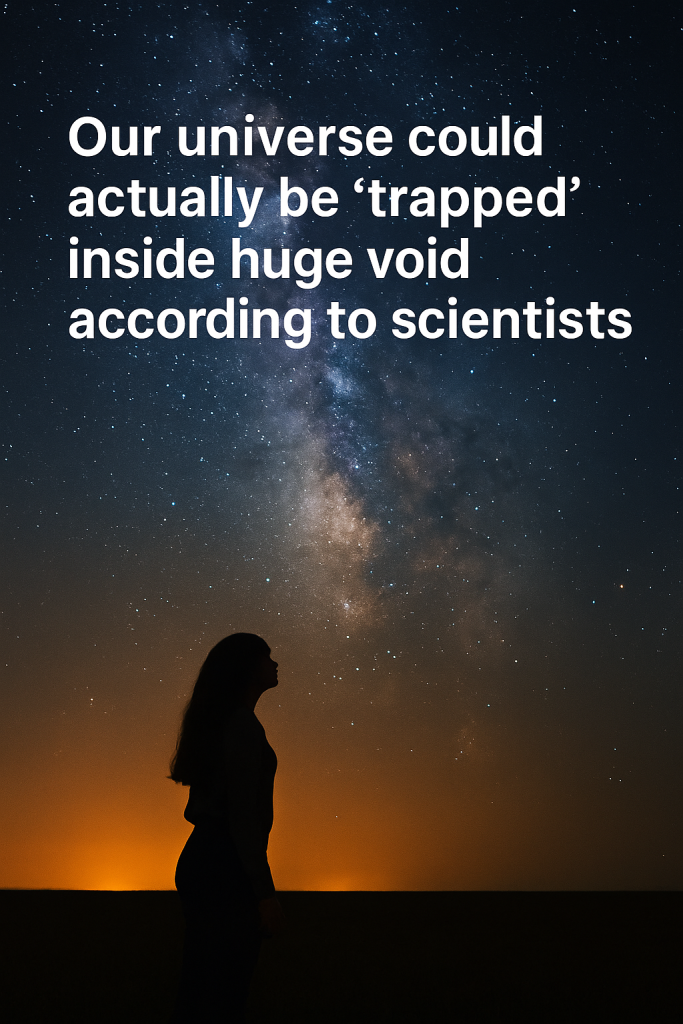Imagine the universe not as an endless expanse filled with galaxies and matter but as something trapped inside an enormous cosmic void. This counterintuitive idea has gained traction among astrophysicists in 2024, challenging conventional views of the cosmos and offering intriguing new perspectives on the universe’s true structure.
Recent studies in cosmology suggest that our observable universe might reside within a gigantic void—a vast, nearly empty region of space containing far fewer galaxies and matter than average. These cosmic voids are well-known features of the large-scale structure of the universe, forming vast “bubbles” between the cosmic web of galaxy clusters and filaments. However, the idea that the entire visible universe could itself be embedded within such a void is a bold and radical proposal scientists are now seriously investigating.
What exactly is a cosmic void? Cosmic voids are immense regions, often hundreds of millions of light-years across, where galaxy density is strikingly low. Most of the universe’s matter—and consequently, its galaxies—reside in the web-like filaments surrounding these voids. In contrast, voids are some of the emptiest and darkest areas known in cosmology.
The new research builds on observations of cosmic microwave background radiation and galaxy distribution patterns, hinting that our universe’s large-scale structure may not be uniformly filled with matter. Instead, the data can be explained if we consider that our local cosmic neighborhood is inside a void so enormous that its influence stretches across billions of light-years.
This void hypothesis could help explain longstanding cosmological puzzles, such as the so-called “Hubble tension,” which is the discrepancy between measurements of the universe’s expansion rate from different methods. If we are located inside a massive underdense region, it would affect local measurements of cosmic expansion, potentially reconciling conflicting data.
Implications for cosmology and our understanding of the universe: If confirmed, this scenario would imply that what we see as the “entire” universe is, in fact, a small patch within a much larger and more complex cosmic environment. It would challenge the widely held Cosmological Principle, which assumes the universe is homogeneous and isotropic on large scales, meaning it looks roughly the same in every direction and location.
Moreover, being inside such a void could have significant effects on the behavior of dark energy, dark matter, and the overall geometry of space-time. Researchers suggest that it might also influence the rate of galaxy formation and the propagation of light, affecting astronomical observations in subtle but measurable ways.
While these insights are exciting, the void universe theory remains controversial and requires more precise observations to validate. Upcoming missions and telescopes, such as advanced cosmic microwave background mapping and deep galaxy surveys planned for the next decade, are expected to provide critical data to test this hypothesis.
In the meantime, this captivating notion—that our universe could be “trapped” inside a vast cosmic void—reminds us how much there still is to uncover about the cosmos. As scientists continue to peer deeper into space and analyze the universe’s subtle structures, our understanding of reality is poised for yet another transformation.
Whether this theory proves true or not, it underscores the vibrant and dynamic nature of cosmology, where each discovery pushes the boundaries of what we thought possible in the cosmic landscape.



